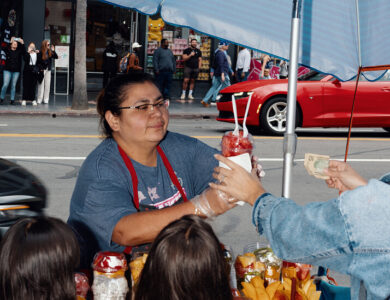
Some Chinese netizens view these meals as the lunch of suffering, but younger people appreciate it.(Image: Twitter @yanarchy)
Explained: The hashtag features unappealing pictures of uncomplicated, cold, and hastily assembled dishes that require minimal or no cooking time
In recent weeks, a surprising food trend has gained popularity on Chinese social media platforms, adding a unique twist to the land known for its widely-loved cuisine. The trend involves sharing pictures of seemingly plain and unexciting dishes, including cheese-wrapped raw carrots, simple two-ingredient sandwiches, and salads without any dressing. These unconventional culinary creations have become a sensation and are being widely shared under the hashtag #bairenfan.
The hashtag #bairenfan, which translates to #Whitepeoplemeals, showcases unappealing pictures of simple, cold, and quickly assembled dishes that require minimal or no cooking time.
How Did the Trend Start?
The trend gained significant traction in May, with people sharing photos and videos of these straightforward meals on various Chinese social media platforms. However, posts featuring the hashtag can be traced back to as early as October of the previous year.
In May, a video captured a European woman on a train assembling her lunch, which consisted of a simple combination of a “bag of lettuce” and “slices of ham.” This video caught people’s attention and sparked the interest of Chinese social media users, leading to the subsequent sharing of similar minimalist meal images and videos under the #bairenfan hashtag.
The viral video triggered extensive online discussions in China regarding these perceived “healthy” meals associated with white people.
Chinese news outlets even published articles seeking input from expatriates about their perspectives on their colleagues’ lunches. Additionally, many social media users continued to share their own experiences of witnessing similar “rabbit food” lunches on a daily basis. This widespread conversation reflected the curiosity and fascination surrounding the trend and its association with Western dietary choices.
‘Bland Meals’
According to a report, many Chinese people are accustomed to cooking with a wide variety of ingredients, resulting in more complex and flavorful dishes. However, some Chinese netizens view these meals as the “lunch of suffering.”
Similar sentiments have been shared by Chinese individuals residing in Europe. For instance, a person in Germany mentioned a colleague who has been consuming the same lunch for a decade: a mixture of oatmeal and low-fat yogurt, accompanied by half an apple and a carrot.
The Root in China’s Exploitative Work Culture?
However, younger people have praised the simplicity and convenience of these meals, leading to the adoption of the unofficial moniker “white people’s food” or “báirén fàn.” It is worth noting that typical homemade lunches in China often require extensive labor, involving numerous ingredients and demanding considerable time and energy to prepare. In contrast, the trending dishes in question were characterized by their simplicity and ease of preparation.
For many young professionals, preparing these “white people’s food” meals offered a refreshing change after a long day. This trend reflects a larger movement among young people in China who are pushing back against the demanding “996″ work culture, which involves working from 9 a.m. to 9 p.m., six days a week.




